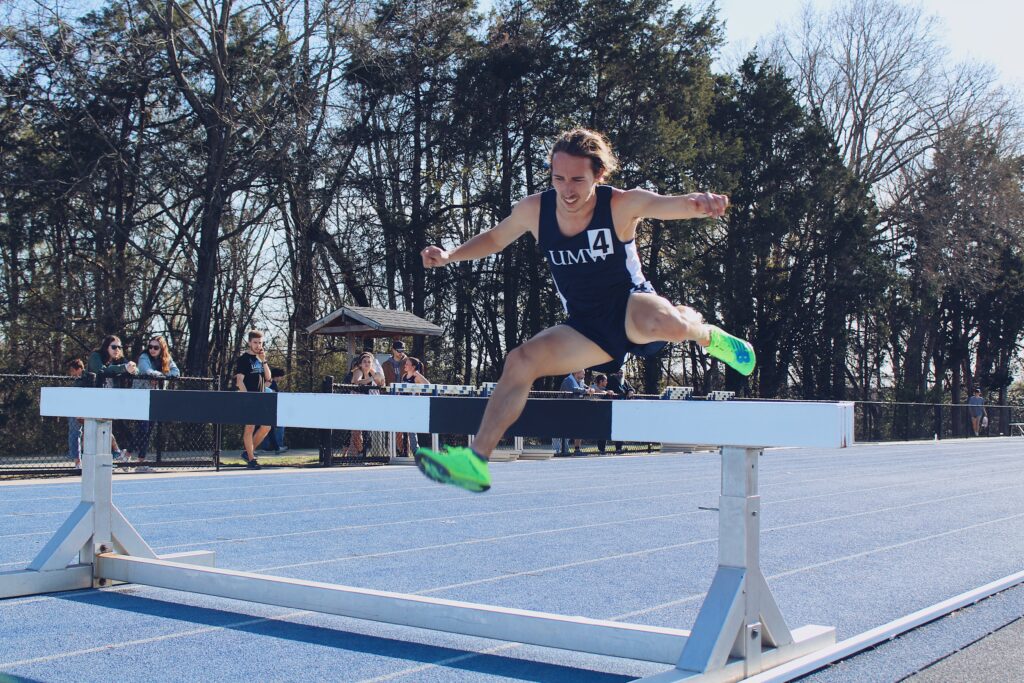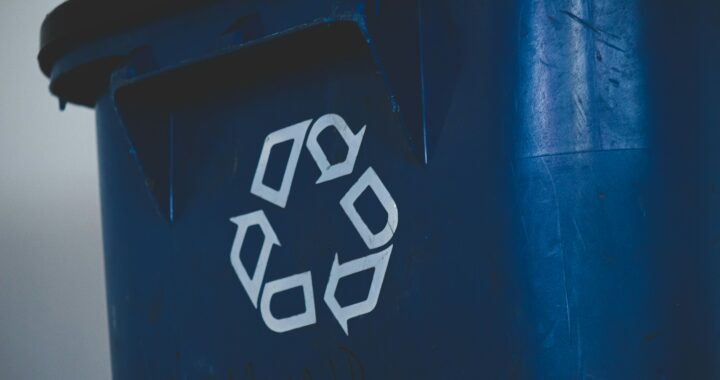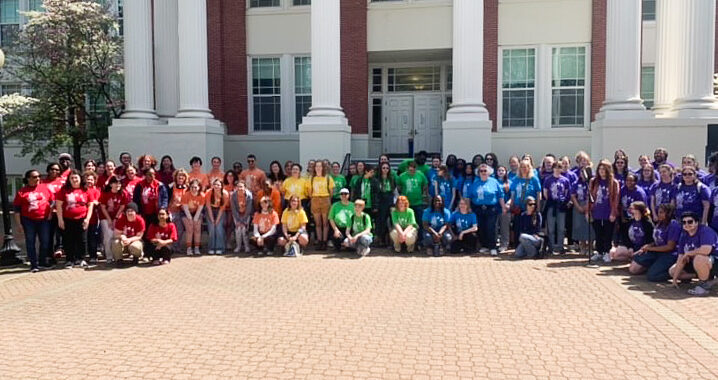Winning games and losing opportunities: challenges of competing in Division III athletics
8 min read
UMW track athlete jumps over a hurdle. | Amber Zipfel / The Weekly Ringer
by EMILY HEMPHILL
Senior Writer
Right up until the commitment day of her senior year of high school, Maddy Sever, now a junior political science major, was torn between attending Ohio State University and attending UMW to play on the women’s soccer team.
Most of her friends were going to OSU, which is only a couple minutes from her home in Columbus, Ohio. But she had been playing soccer since she was five years old, so the possibility of carrying on her athletic career at UMW, where she had been recruited, was appealing to her.
It was a difficult choice, but soccer won out. She committed to playing Division III soccer at UMW starting in the fall of 2019. However, she left the team in March of her first year.
UMW’s student-athletes often come to the school with the hopes of being able to continue with their sport for four more years while simultaneously completing an undergraduate degree. Once they arrive, however, many realize how demanding and time-consuming even a Division III athletic program is. But coaches are driven by the same desire at any level: to win.
This difference in objectives and several other issues existing with coaches and teams, such as poor communication and unwelcoming environments, make it challenging for players to remain dedicated to these programs, resulting in 13.8% of athletes leaving UMW sports teams every year, according to Athletic Director Patrick Catullo. This number is around 15% nationally.
“My hands were tied in terms of time just because of soccer,” said Sever. “It was like ‘why am I doing this?’”
ACADEMICS:
Division III athletic programs across the country promote an opportunity for dedicated athletes to keep playing their sport at a competitive level while also having a more normal college experience than more rigorous programs.
“The sport isn’t all encompassing in their experience at Mary Washington,” said Catullo. “I think it’s important to become engaged across campus, academics first and foremost, we pride ourselves on being leaders in the classroom. We tout the success of our team GPAs and our academic awards and kind of doing all of those pieces really well, so it’s not just about winning.”
Most teams hold study halls to help students create space in their schedules for academics. But many students say it’s still not as much time as non-athlete students spend on their homework, and several added that athletics ended up taking the majority of their time.
Natalie Brennan, a junior biology major, experienced this during her freshman year on the women’s basketball team and, after one season, realized that she would need to be the one to prioritize herself and her future.
“My time was not divided equally between being a student and an athlete,” Brennan said. “It was very heavily skewed on being an athlete and anything looking towards the future, career-wise, you don’t have that time or energy to devote to. So it feels like you’re being set back … It was taking away more than it was adding for me.”
Andres Cabrera, a 2021 graduate and former member of the men’s soccer team, described the high level of energy it required to perform well on both the team and in the classroom and how, more often than not, it was a choice between one or the other. Cabrera believes his grades suffered his freshman and sophomore year as a result. He didn’t play his senior year.
“I just wanted to focus on school because to play soccer it takes a lot,” he said. “It takes a toll on you and you have to be mentally ready.”
Sever said when it came to splitting time between being a student and an athlete, 70% of her time was dedicated to soccer and the remaining 30% was spent on schoolwork. She also noted the mental and physical toll it took when struggling to balance sports and school, and said she couldn’t imagine trying to maintain that along with her more rigorous workload as she nears graduation. She compared the time commitment of soccer to that of a part-time job with the daily practices often running over two hours, games twice a week with travel, films, meetings, and workouts totaling to at least 25 hours a week.
“We obviously had the same access to peer tutors as everyone else does, but can you fit that in your schedule?” she said. “It isn’t really up to you.”
She added that, because athletes aren’t given priority registration, she couldn’t pick professors or classes she wanted. Instead, her athletic schedule took precedence.
Head swimming coach Justin Anderson offers two daily practices that his swimmers can choose between in order to have more flexibility in their school schedule, but this type of scheduling is uncommon.
Scott Gerseny, the head coach of the women’s soccer team, says he has made efforts to improve his players’ academic success. When he arrived in 2019, he said, the team GPA was 3.12. By last fall, it had risen to 3.48.
“We are also seeing a lot of academic success,” he said. “We do require study hall hours for freshman and all players under a 3.0 to help with time management and help increase structure in their daily routine. Players are welcome and encouraged to come in and discuss any academic issues they have at any time.”
Yet, student-athletes say that GPA isn’t the only marker of academic success, especially when it comes to building up resumes with internships, research projects and other opportunities to advance future careers. These activities are not options for them because of the time commitment that sports demands.
COMPETITION:
Another challenge of D-III sports, athletes say, is that when they face setbacks, either due to conflict with coaches or teammates, it doesn’t feel worth it to overcome them as they know they won’t be pursuing athletics long-term. Often, they say, the coaches prioritize the best players and don’t address concerns raised by the others.
Kevin Leong, a previous men’s soccer player and junior physics major, underwent surgery this past summer to repair a dislocated shoulder but returned healthy and ready to compete his junior season. While his coach, Jason Kilby, checked on him a couple times, Leong began to feel disconnected from Kilby and, subsequently, the team due to his injury. Because he was out of play and no communication was taking place between him and his head coach, once the season started, Leong felt like he was no longer useful to his coach. It became clear to him the relationship was not about camaraderie, but rather one-sided. He quit.
“I’d say my overall happiness has increased exponentially,” said Leong about leaving. “There’s this weight off your shoulders. You realize how much time you’re actually putting into sports and how much energy you have to do other things.”
Brennan had similar experiences with women’s head basketball coach Deena Applebury; when going to Applebury’s office to ask what she could work on to gain more playing time, she did not receive any useful advice. It seemed that no matter how hard she worked, it wasn’t producing results with her coach. In addition, when she was upset that a close member of her team quit and moved back home, Applebury told her to “get over it.”
“I go to the office and I’m like ‘tell me what I need to fix so I can get on the court more,’” she said. “You can have a great stretch of practices where even people on the team are noticing, but it feels like you can do so many good things but one moment in practice will knock you back down the totem pole.”
“It wasn’t constructive criticism,” Brennan said. “It was just criticism.”
Applebury says that time management is especially difficult for basketball players because the season crosses into both semesters. She also said that student-athletes are volunteering their time for a love of the game.
“I have an open and honest conversation with each student-athlete about what their goals are and then what we believe is the best plan moving forward to help achieve team goals and if possible also reach personal goals,” Applebury said.
Bailey McNabb, a sophomore biomedical sciences major, left the swim team this September. She and her roommate, also a swimmer, had a serious falling out that led to McNabb being alienated from the rest of the team. Teammates who she didn’t even know were blatantly ignoring her in and out of the pool.
She went to speak with head swim coach Anderson regarding the conflict, but stated she was essentially dismissed, told “sorry you feel that way,” and directed to the Talley Center. While she would have liked to stay on the team, ultimately she decided it was no longer worthwhile because she wasn’t able to enjoy the sport she loves.
“After all that had happened my freshman year and Anderson’s lack of being willing to directly deal with issues, I decided it wasn’t worth being on the team anymore,” McNabb said. “Why should I keep waking up at 5 a.m. to force myself to be miserable? I knew I wasn’t going to continue swimming after college anyway.”
According to Catullo, there are no programs currently in place that instruct coaches in developing communication skills, rather an emphasis on an “open door policy” for athletes to bring up any concerns.
“The understanding is that not every student-athlete has to like what the coach says,” Catullo said. “But they have to understand, they have to communicate and be transparent about why and what that is. And if that’s not the case, then we ask that the coaches have that conversation, whether it’s verbal or in writing about the decisions that they make good, bad or otherwise.”
COVID-19 has created another issue for athletes. While athlete retention has stayed fairly level, athletes describe a divide between upperclassmen and lower classmen that’s been difficult to broach and a loss of interest after a year without many games.
RESOLUTIONS:
When asked what they would like to see changed within the athletic program, former athletes uniformly called for better player management by coaches, more access to academic and mental health assistance and more effective conflict resolution measures.
“The advice I always try to give to high school seniors who are considering playing D-III in college,” said Sever. “Pick the school that you can see yourself at without playing the sport, because you’re not getting paid to be there, it’s a lot about academics, it’s a lot about personal relationships. And so if you don’t have any of those things you’re not going to enjoy it.”
After playing the best she ever had her senior season of high school in a new position on the field, Sever was excited to carry that into her next stage of life at UMW. She felt like she “still had a lot more to give and wasn’t ready to give that up.” However, passion alone was not enough to sustain her through all of the adversity that came with being on the team.
Though she hated to quit the team because of her love for the sport, Sever managed to find the balance she had been looking for by joining the women’s club soccer team.
“I love all the girls,” she said. “I’ve made so many more friends in one semester doing club than I did my whole freshman year spending all that time with the same group of girls. It’s still competitive. It’s a lot more fun in my opinion. Just because it’s more relaxed and you still have time to do everything else that you want to do.”











